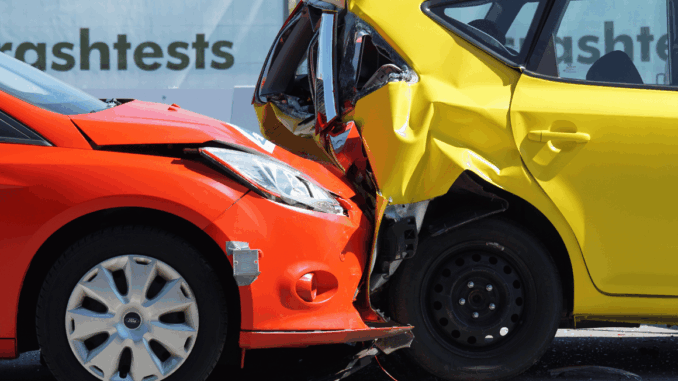
When it comes to auto insurance, most drivers believe their quote is set in stone—just input your info, and out comes a fair rate, right?
Not exactly.
Insurance companies use complex algorithms, risk modeling, and strategic pricing to calculate your premiums. Behind the curtain, a range of subtle factors—some obvious, some surprising—can drive your rates up or down.
In this post, we’ll uncover 7 insider “secrets” that insurance companies use to price your policy—and show you how to turn that knowledge into serious savings.
🔍 1. Your Credit Score Has a Bigger Impact Than You Think
One of the most overlooked influences on your premium is your credit-based insurance score. In most states, insurers use this score to predict your likelihood of filing a claim.
Why it matters:
- A high credit score typically results in lower premiums
- Poor credit can raise your rates by hundreds per year
- Insurers argue that people with better credit tend to file fewer claims
💡 Tip: Check your credit report regularly and dispute any inaccuracies. Keeping credit card balances low and paying bills on time can help boost your score.
🛑 Note: California, Massachusetts, and Hawaii restrict or ban the use of credit in insurance pricing.
🚗 2. Your Vehicle Tells Insurers More Than You Think
The make and model of your car affects much more than repair costs—it also signals your driving risk.
Insurers assess:
- Repair costs and parts availability
- Safety ratings and crash test data
- Theft risk by model and region
- Performance characteristics (e.g., sports cars = higher risk)
Luxury cars, convertibles, and high-performance vehicles often carry significantly higher insurance costs—even if you’re a safe driver.
💡 Tip: Choose cars with high safety ratings, low repair costs, and theft-deterrent features.
📍 3. Where You Live (and Park) Heavily Influences Your Premium
Your ZIP code affects everything from accident frequency to theft rates—and insurers track this data closely.
Higher rates typically apply in:
- Dense urban areas with high traffic volume
- Locations with high crime or vehicle theft
- Regions prone to natural disasters
💡 Tip: If you move, even to a nearby suburb, shop your policy again. A small change in address can lead to significant savings.
📲 4. Yes, Your Driving Habits Might Be Tracked
Welcome to the era of usage-based insurance (UBI) and telematics. Many insurers now offer optional programs that monitor your driving in real-time via apps or devices.
They track:
- Speeding and rapid acceleration
- Hard braking or sharp turns
- Time of day (night driving = higher risk)
- Total mileage
Safe drivers may receive up to 20–30% off, but reckless patterns can lead to higher premiums.
💡 Tip: Only enroll in UBI programs if you consistently drive safely. Some apps allow you to track your behavior before committing.
💸 5. Most People Miss Out on Discounts They Already Qualify For
Many drivers overlook discounts they’re eligible for, either because they’re not offered automatically or they don’t ask.
Common discounts include:
- Bundling auto and home/renters policies
- Multi-car discounts
- Good student discounts
- Military or senior discounts
- Defensive driving course completion
- Low-mileage or usage-based driving
💡 Tip: Always ask your insurer or agent, “What discounts am I missing out on?” They might not offer them unless prompted.
🧾 6. Your Claims History Can Haunt You—for Years
Even small claims can impact your rates for 3–5 years, depending on the insurer. Filing too many claims can result in premium hikes or policy non-renewal.
Some companies offer accident forgiveness, but it’s not standard and often costs extra.
💡 Tip: Consider paying out of pocket for small repairs. Reserve claims for significant damage.
⚠️ 7. Policy Structure and Fine Print Shape Your Rates
What’s written in the policy itself—your limits, deductibles, and endorsements—can significantly influence your cost.
- Higher limits = more protection = higher premiums
- Lower deductibles = less out-of-pocket cost = higher premiums
- Extra coverages like rental reimbursement or glass coverage may bump up your cost, even slightly
💡 Tip: Review your declarations page line by line, and don’t hesitate to ask your agent to explain anything that seems vague or inflated.
✅ How to Use These Secrets to Your Advantage
Now that you know what really affects your car insurance rates, here’s how to take control and optimize your coverage:
- ✅ Maintain good credit
- ✅ Drive a safe, affordable vehicle
- ✅ Limit your mileage and avoid risky driving hours
- ✅ Use telematics wisely if you’re a safe driver
- ✅ Review your policy annually
- ✅ Ask about all available discounts
- ✅ Compare quotes every 12 months or after major life changes
🧠 Final Thoughts: Smart Drivers Get Smart Coverage
Auto insurance isn’t just about checking a box—it’s a highly data-driven, strategic product designed around risk and reward. By understanding how insurers price your policy, you can make smarter choices, avoid overpaying, and protect yourself better on the road.
💬 Want help analyzing your current policy or comparing quotes? I can help you build a checklist or coverage comparison tool—just say the word!
Leave a Reply